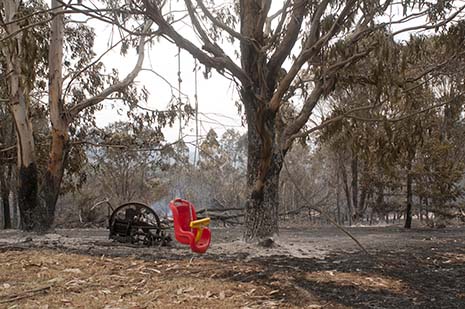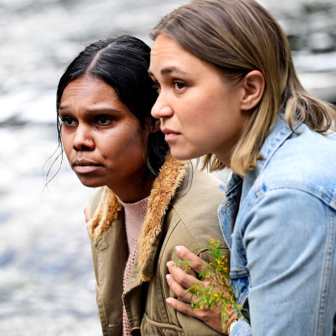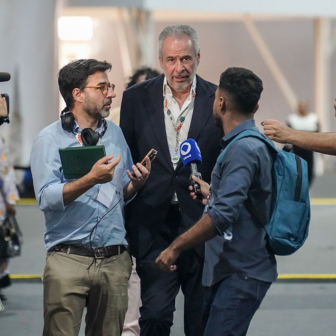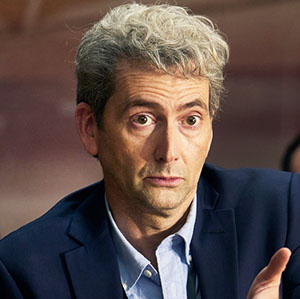The fires that swept through the Las Conchas region in New Mexico in June 2011 intensified at four times the rate of any previously known outbreak, consuming almost an acre of forest each second, incinerating even the mother trees and, along with them, any prospect of cyclic regeneration. Specialists in fire and forestry were left confounded by the scale of the impact, and also by its implications. These fires seemed to have defied the laws of physics. They burned uphill, against the wind, feeding not only on debris and groundcover but also, apparently, on the earth itself, leaving the crust baked hard to deep below the surface. Something went on in the fire column that no one can understand.
We in Australia are acutely conscious of living in a fire-breathing land. Across the states we have had our Black Fridays, Black Saturdays, Black Thursdays and Ash Wednesdays, and the stricken areas have been revisited with increased fury at unpredictable intervals. Fires feed our national mythologies and our sense of cultural identity, and we have developed our own traditions of knowledge about them.
Earth on Fire, an ABC TV Catalyst special, provides some insights from other parts of the planet, beginning with a visit to Las Conchas, where reporters Anja Taylor and Mark Horstman interview Craig Allen, a research ecologist, and Bill Armstrong, a fuels specialist with the US Forest Service. Neither is interested in engaging in polemics about climate change. These are specialists whose knowledge is derived from long-term engagement with the terrain they study. They don’t pontificate, they contemplate.
Allen offers a deep-time perspective. Putting the Las Conchas event in the context of patterns of landscape change over several thousand years, he’s specific about the contributing factors, which include increased temperatures and human modification of natural cycles of burning and regeneration. Armstrong is something of a natural philosopher. “This is a landscape of wounds,” he says. “I find it very sad and foreboding.” But he’s not moved to apportion blame. The problem is one of understanding and misunderstanding; the errors, which go back a long way, have been the consequence of premature assumptions of knowledge. What matters now is that we are faced with the recognition of what we don’t know.
Paradigm shifts in science are traditionally accredited to individual human geniuses and their landmark discoveries, but here we have a potentially seismic shift in cognition brought about by catastrophic engagement with an environment we thought we knew better. Megafires are the stuff of high drama and make for sensational television footage. But the real story is the learning curve and where it’s going, because those in the best position to know want to focus – at this stage, anyway – on questions, not answers.
In Tucson Arizona, Tom Swetnam is studying fire history by examining tree rings. Swetnam has discovered that there is a gap in fire events of almost a century after 1900, corresponding with the takeover of land by graziers and with longstanding government policies of fire suppression. What we may be seeing is a backlash effect, to which the urgent response is an escalation of burn-off regimes, but the public isn’t ready for this. Most of us admire the heroism of fire-fighting, Bill Armstrong says, but we don’t like to see large-scale, wilful burning of forest, a costly exercise requiring government support and government funding. If public intelligence hasn’t caught up with the realities of the situation, though, much greater costs may be attached to the delay in acting. A research team in Hobart has modelled the potential spread of a megafire with and without the burning-off of ground fuel: without, there is a serious prospect that the entire city of Hobart could be engulfed.
The Australian side of this story is explored through conversations with Peter Jacobs, chief ranger of the alpine district for Parks Victoria, and David Bowman, a plant scientist at the University of Tasmania. Jacobs and Bowman sit by a campfire in the Victorian alps and exchange speculations about the impact of recent megafires on the mountain ash forest. They foresee some controversial changes to land management, including intervention in the distribution of seedstock in order to regenerate high-ground forest areas that may have been permanently eradicated by the firestorm. But what happens, says Bowman, when you run out of seed, money and commitment? Sometimes you have to accept landscape change, and that may be what we are faced with, though “it would be a courtroom argument that this is unprecedented.” Jacobs and Bowman agree that it’s a matter of finely balanced evidence. There are no easy positions.
Earth on Fire is concerned with humanity’s role in some grand planetary equations in which the calculations of modern science have so far proved dangerously inept. American scientists are trying to learn from the strategies of Pueblo Indians in the fourteenth century; in Australia, we defer again to Indigenous traditions of knowledge and practice. In the meantime, the forests suffer; but so do we, blindsided as we are by overheated opinions from various political camps and a “debate” about climate change that can only tighten the lockdown on any genuinely responsive thinking. For Bowman, our hope lies in forming “all sorts of relationships, covenants, agreements, rapprochements with fire and flammable landscapes.”
That may involve some of us in rather more than most of us bargain for. Moira Fahy’s documentary Afterburn: In the Tiger’s Jaws is concerned with the impact on human lives following the Victorian fires of Black Saturday in February 2009. Ten people died in the small community at Steel’s Creek, where the film follows the experiences of three families who lost their houses. Their unfolding story is tracked at intervals over the subsequent year as they come to terms with the immensity of what has happened to them.
In the first series of interviews, they relive the events of the day, recalling how they monitored reports of a fire front that had reached a township fifty kilometres away, how one resident picked up on the danger from a radar image that indicated a much larger fire than they’d imagined, and how in the late afternoon the fire announced itself with a “deep-throated roar” like a set of jet engines at takeoff. By the time it came over the hill, the front was over eighty metres wide. Embers rained from the sky “like an air raid.”
Four months later, in June, the shock is still reverberating. They are, in the words of one member of the community, “thrust down the rabbit hole of grief and loss.” To lose your home, your business, your car, all your personal possessions, the future you planned for your children and the past that was a whole way of life, all within the space of two or three hours, is something no one outside the trauma zone can really imagine.
Trauma is an easily available word for the designation of psychophysiological states that are often impossible to communicate. Rob Gordon, a Victorian psychologist specialising in trauma arising from disaster experiences, provides some essential insights. “We should understand it as an experience sufficiently intense to injure or damage the mind, the connection to society and to other people,” he says.
From outside the echo chamber of traumatic experience, friends, would-be helpers and members of the public typically do and say all the wrong things. Someone who has just been rendered homeless in a fire doesn’t want to be given bags of secondhand clothes, or be asked immediately about whether they are planning to rebuild, or be featured as a “victim” in press coverage. As one of the participants says, “I don’t see myself as the victim of anything.” Admitting what we don’t understand, scientifically or emotionally, may be the beginning of a better way of managing our future in a changing landscape, and of engaging in the process of making the covenants, agreements and rapprochements David Bowman envisages.
Afterburn is the fourth documentary from director Moira Fahy about the social impact of bushfires. It can be ordered on DVD from the director, and plans are in progress to screen it soon on television. It is an effective counterpart to Earth on Fire which, with its searching conversations, globe-crossing perspectives on new directions in research, and lucid accounts of complex events in remote environments, is doing some of the best work television can do. This is so much more genuinely informative than the personality-driven genres of classroom TV dominated by over-enthusing presenters, and so much more compelling. •




